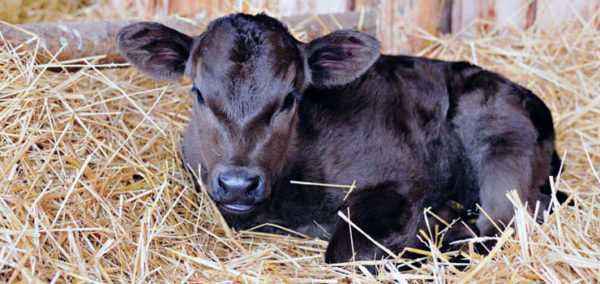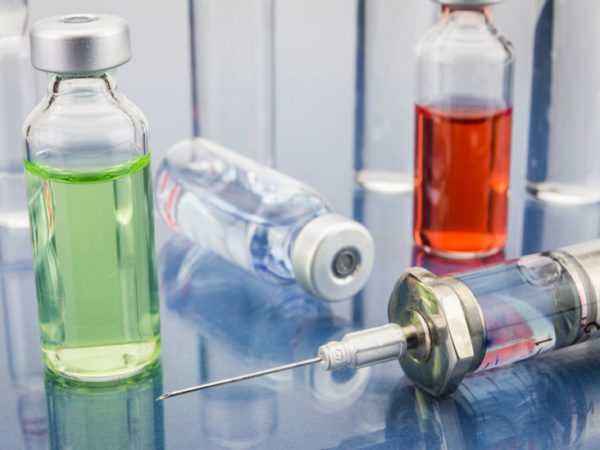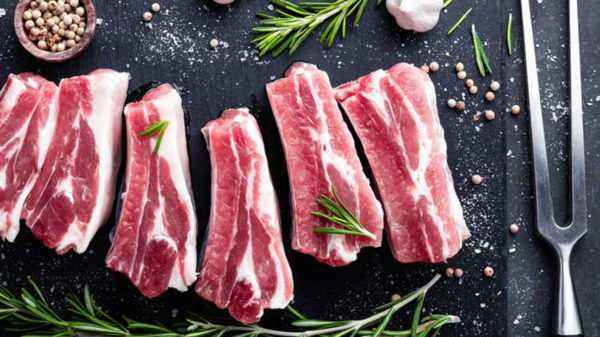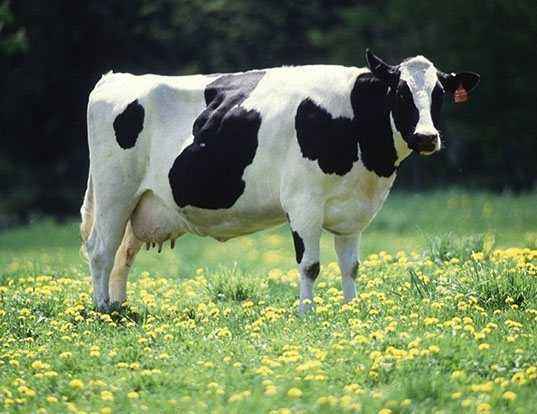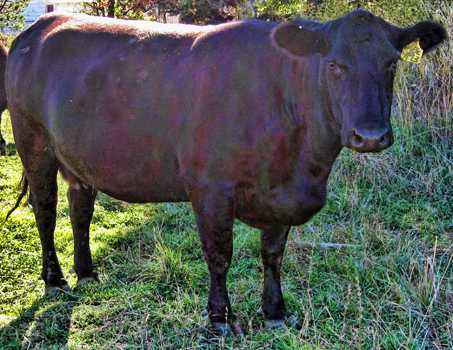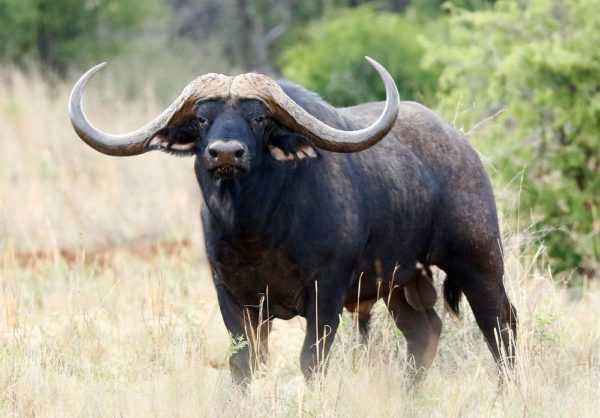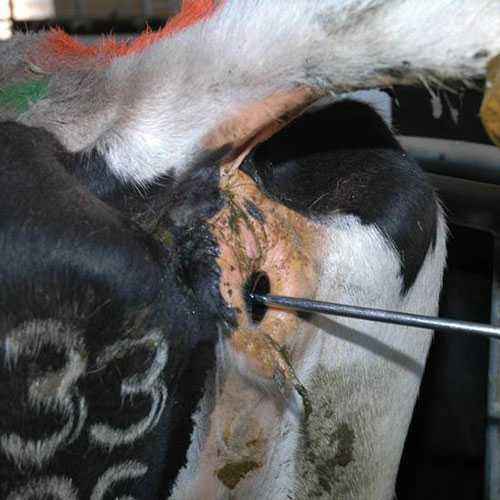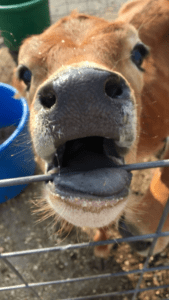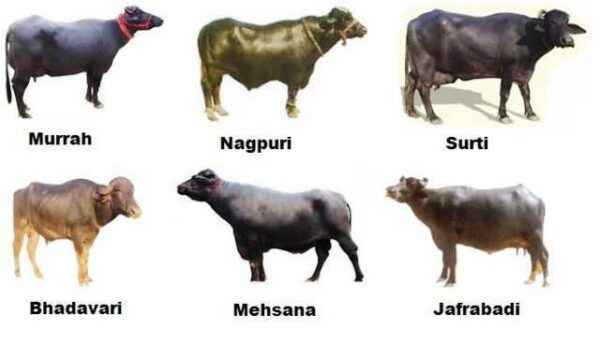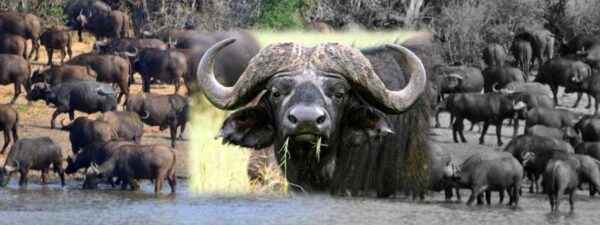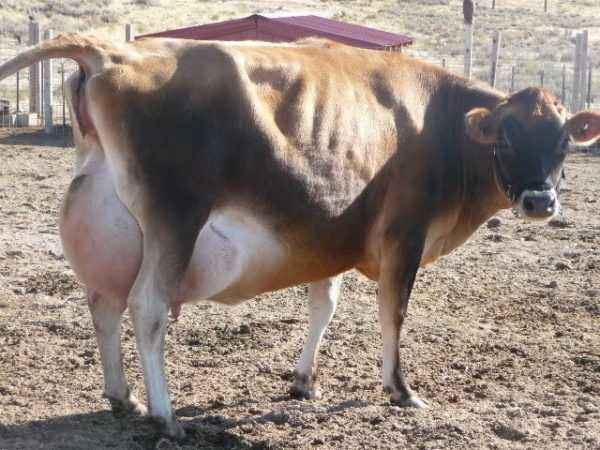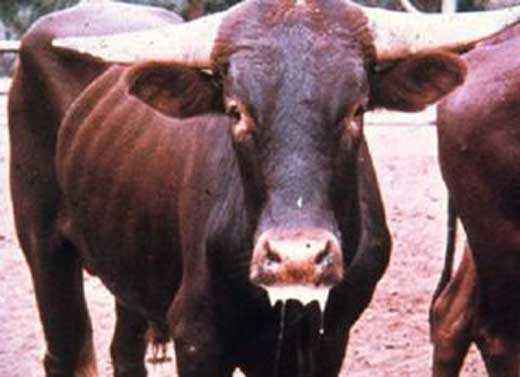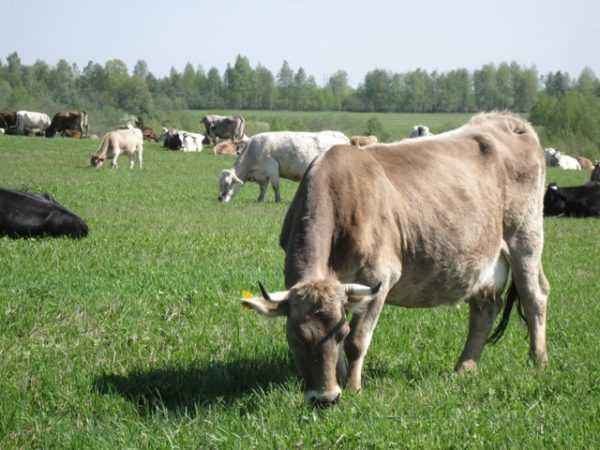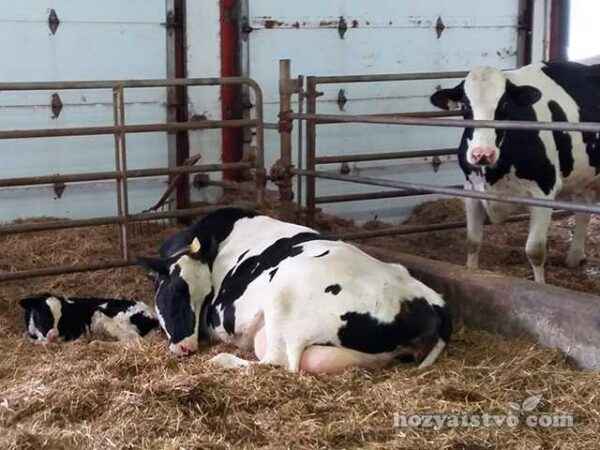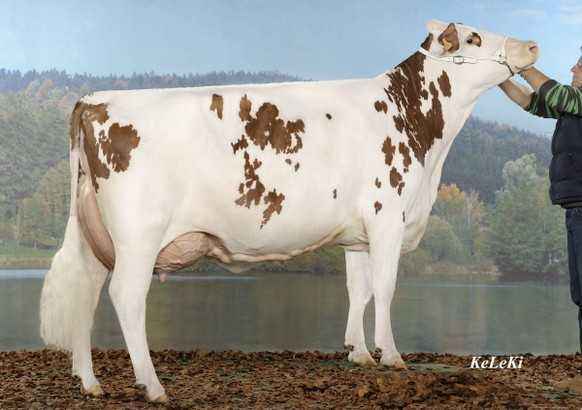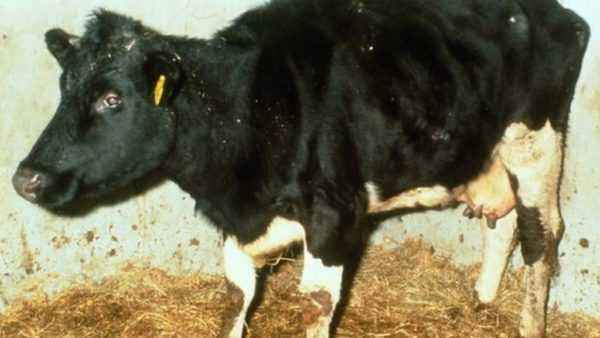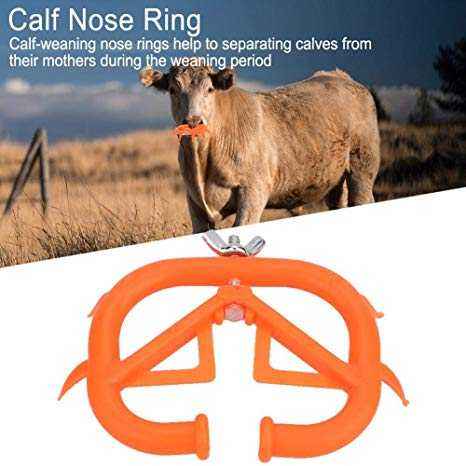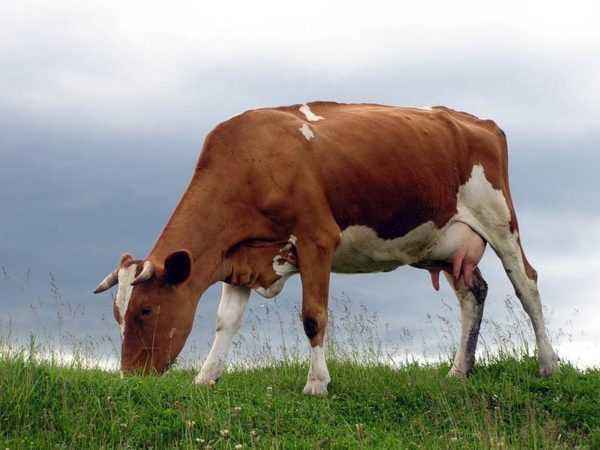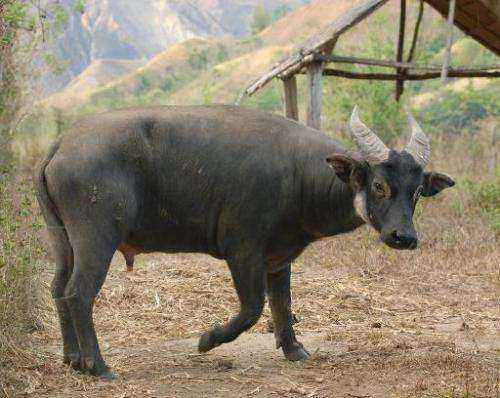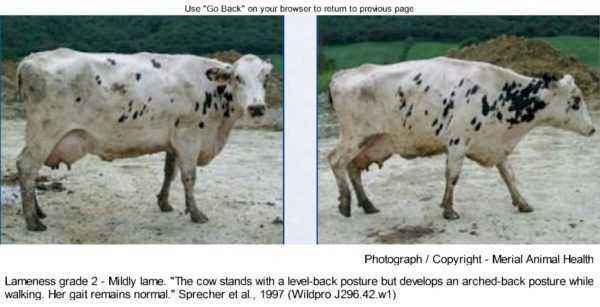Many farmers are thinking about how to improve livestock productivity without acquiring additional individuals. There is a solution – insemination of cows, which makes it easy to vary the number of livestock. What methods of fertilization exist? What is their fundamental difference from each other?What to choose: a natural or artificial approach? You will find answers to these questions in the review.
- How to Identify Cows Hunting
- Best Time for Insemination cows
- Types and rules of insemination
- Features carrying out the manocervical method of insemination
- Visocervical method of insemination
- Features of the execution of the rectocervical method
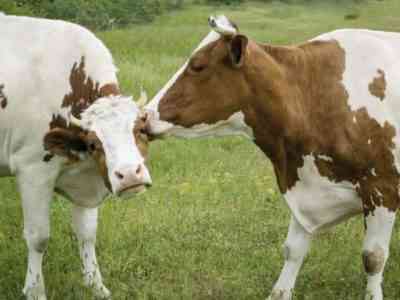
Insemination of cows
How yyavit estrus cows
Scientists have shown that a cow belongs to the poly-mammals, which means that it can produce offspring year round. The duration of the cycle in the animals in question is approximately 3 weeks and has the following stages:
- arousal (this includes estrus, sexual hunting and ovulation);
- inhibition (behavioral signs recorded by the gaze: restoration of appetite, neutral reaction to the bull);
- balancing (the standard state of the animal).
As for estrus, it is easy to recognize it, because mucus begins to stand out from the genital passages , which darkens at the end of the cycle, swelling of the external genitalia.This occurs under the influence of an increase in the amount of estrogen in the blood, caused by the maturation of follicles. This period can also be determined by the behavior of cows. The animal loses its appetite, becomes restless, begins to move more actively. On average, estrus lasts only 30 hours, although cases of stretching this phase for 5-6 days were noticeable.
As for sexual hunting, this phase is distinguished as the most important for insemination (whether natural or artificial) . This period begins approximately 25 hours after the estrus is opened and lasts a little more than a day. Why is this time important? Because it is here that the compliance of the cows with the manipulations is observed (bull attack, human introduction of the seed into the genital passages). It is during this period that the egg leaves the ovary (the beginning of ovulation), therefore it is considered the most optimal time for insemination of cows.
If sperm have not been delivered to the egg, then it dies, is excreted, the estrogen content drops , the appetite is restored, in other words, the inhibition phase begins, which is replaced by balancing (lasts 20-25 days until a new estrus).
The best time for insemination of cows
How to determine when to inseminate cows? The most optimal time is the phase of sexual hunting (several days), when the heifer has secretions and it begins to lick the genitals, laying its head on the back of other individuals.
It is important to know that only a sexually mature individual aged 8-10 months is ready for mating.
Normalization of the heifer cycle occurs only towards the end of the second year of life, therefore, it will be correct to use the senior representatives of the livestock (this will simplify the choice of the time of insemination, get healthy offspring, save the life of your cows).
If the proposed information did not help answer the question of when to inseminate a cow, the table below which clearly indicates the best time to choose procedure parameter.
This table helps to choose the most optimal time for any type of fertilization ajor cattle.
Forms and rules insemination
How to inseminate a cow?Currently, the following methods exist:
- natural (animal sexual instinct);
- artificial (introducing sperm using special tools).
There is no point in talking about such a method of insemination of cows as natural, where the bull plays an important role, but the latter is worth stopping, especially since it can be produced in different ways (by rectocervical, manocervical and visocervical methods). What are these variations and what is their difference? Which method is more humane? When is fertilization more effective and less likely to become infected? Perhaps these are the key issues that concern farmers who have decided to inseminate the cow artificially.
Important: the procedure should be performed by a person who has the appropriate medical education, who knows not only the structure of the animal, but also the rules for insemination of cows.
Here are some of them:
- The procedure for artificial insemination of eggs in cattle (cattle) occurs only in special places. The room should be equipped with a washing, laboratory and paddock with clamps. Compliance with this rule will eliminate the risk of injury and infection due to sterilization of equipment and clothes in the washing room, and the laboratory stores all the necessary equipment and seminal fluid.
- If you plan to inseminate cows on a farm, you must first sanitize the room and clean the animal itself with mild solutions (furatsilin diluted with water in a ratio of 1: 1).
- Before the procedure, you need to learn about age of the cow and choose the appropriate insemination option.
- It is imperative to conduct a preliminary examination of the cervix for normal functioning.
- Work takes place in special gloves lubricated with petroleum jelly.
- know how to prepare a cow for the arts insemination: before the introduction of sperm, it is important to clean its anus from the remains of manure, disinfect it and the labia and massage the uterus (increase its tone).
- All manipulations are performed gently, carefully so as not to harm the animal.
- You don’t have to rush to insert a catheter, you should wait for vaginal cramps.
- You can’t remove the catheter immediately after the seminal fluid has been introduced (this can only be done after probing the suction spasm).
There are several ways to understand that a cow has become pregnant: follow her behavior (stopping the hunt, the mucus has disappeared) and donate blood to prolactin 15 days after insemination.
Tip: Start keeping a discharge calendar to always know when it is possible to inseminate a cow according to preliminary data.This will allow you to prepare for the procedure in advance (to release several days in order to freely observe the animal with estrus).
If spotting has appeared, you should immediately call a veterinarian and examine the animal (this may be both a sign of pregnancy and a manifestation of trauma to the genital organs.)
Features the manocervical method of insemination
The manocervical method can only be performed by a competent specialist who knows the structural features of cattle (for he is not soo ETS concepts multiplicity insemination of cows). How the procedure occurs:
- Before insemination of cows, the vulva must be disinfected (you can use a weak solution of furatsilin or potassium permanganate).
- Check for signs of ovulation (estrus, mucus is clear).
- Determine the opening of the cervix (a hand covered with a glove with a petroleum jelly is inserted into the vagina).
- Massage the cervix for 2 minutes.
- the second hand to place a pre-prepared catheter and an ampoule with sperm.
- Gently put the brush of the second hand into the vagina, and to atheter – into the cervical canal by 1.5-2 cm.
- Attach the ampoule to the catheter.
- Extrude the contents of the ampoule with the cervix relaxed (this is the period when the hollow organ draws into self seminal fluid).
- Used tools to remove from the vagina, while massaging the cervix.
Important: if an animal is uncomfortable or painful at any age, the cervix will contract and the sperm will spill out, therefore, insemination of the cow may not occur.
You can inseminate cows in this way repeatedly – the ideal option would be to repeat the procedure after 12 hours. It is not necessary to carry out 3-4 procedures of artificial insemination of cattle in a row, because in this way it is possible to provoke the process of antibody formation and the development of infertility in animals. Based on this, it is necessary to indicate how many times it is acceptable to inseminate animals in order to obtain high efficiency – 2 times.
It is worth noting that the veterinarians do not choose the manocervical method if there is a young cow in front of them who has never been susceptible to insemination. The thing is that the heifer has a rather narrow lumen of the vagina, and by its action the insemination will only harm the animal. It is better to leave such a method for cattle that has already given birth (that is, is over 2 years old).
Visocervical insemination method
This method is carried out with using a vaginal mirror, a special syringe-catheter and involves a full examination of the cervix.
Algorithm of the procedure:
- In laboratory conditions, prepare special solutions that allow for thorough sterilization of instruments and the animal.
- Check for signs of ovulation (whether mucus is visible on the genitals, sexual hunting).
- Before the procedure, be sure to clean the vulva of the cow with a weak solution of furatsilin, and treat the mirror and burn it (it’s better to burn a swab, dipped in alcohol, and then use the salt composition).
- After inserting the mirror into the vagina and opening it so that you can examine the cervical canal.
- Sperm is collected in the syringe (be sure to remove air bubbles).
- Place the catheter into the cervical canal to a depth of 4-5 m.
- The contents of the syringe to enter slowly into the uterus through a catheter. When the fluid went through the catheter, the mirror is covered.
- Remove the catheter and mirror from the vagina, massage the cervix. After this moment, pregnancy remains to be expected.
Important: with this method of insemination of cows, you need to remove the mirror by slightly opening it to avoid damage to the delicate mucous membrane of the vagina.
Advantages of the method under consideration :
- Ease of execution.
- High efficiency (uninseminated cows make up only 1%).
If bloody discharge appeared after insemination of the cow or white or purulent, you must immediately call a veterinarian and examine the animal for infection infection. Perhaps the cause of inflammation was a violation of sterility.
Features of the execution of the rectocervical method
The name of this method is deciphered as insemination of the blood through the rectum (“recto” – behind). The tools for its implementation are in individual packages (already sterile), but it is better to process them again, because you cannot be 100% sure of the integrity of the package.
Execution algorithm:
- It will be better if the animal undergoes a preliminary examination for infections in the body (you need to make sure that the breed is not sick).
- Make sure that the cow is at the right stage (check for signs of ovulation).
- It is important to prepare a syringe (fill with sperm and make sure that the seminal fluid without a bubble rkov).
- It is necessary to cleanse the rectum and treat not only her, but also the labia with a solution of furatsilin.
- The hand of the seeder must be inserted into the rectum (always with a glove).
- Feel the uterus, or rather, the cervix (resembles a ribbed cylinder).
- With the other hand, insert the syringe with sperm and a catheter into the vagina and advance gently to enter the cervical canal.
Important: in order to control the process of penetration of the instrument in the right place and not to prick the bladder, you need to work big with the face of a hand located in the rectum of cattle.
- Push the catheter to a depth of 6 cm into the cervix and squeeze the contents into the uterine cavity (key period of the procedure).
- Remove the instruments and perform a short massage of the cervix .
- Rinse the external genitalia and rectum with an antiseptic solution and expect calving from now on.
Rectocervical method of insemination of cows is used in villages all the time, despite the large number disadvantages, among which low efficiency. The thing is that not every specialist is able to correctly find the cervix by touch, and even more so to fix it. Plus, inexperienced inseminators can damage the mucous membrane of the genitals and provoke bloody discharge.
Do not forget that with such a campaign the likelihood of developing infectious diseases, because with poor-quality cleaning of the rectum, feces can get on the vaginal mucosa.
Having decided to inseminate the cow, you should try to choose a competent specialist who is able not only to carry out the procedure qualitatively, but also to choose the most optimal and most sparing one for the cow option (mainly manocervical).It is important not to forget to follow the rules of the procedure to ensure the birth of healthy offspring and to preserve the life of cattle.
